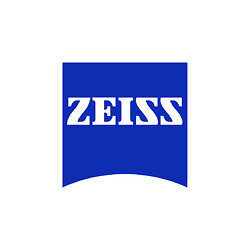Expanding the Horizons of Resolution Performance
Discover updates to XRM for academic and industrial research.
The horizons of what users are able to achieve from their research are growing - enabled by the newest 3D X-ray microscope (XRM) from ZEISS.
Known for their ability to accomplish Resolution at a Distance (RaaD), the ZEISS Xradia Versa family is now expanded by ZEISS Xradia 630 Versa.
Breakthrough Resolution Performance with RaaD 2.0
The ability to maintain resolution over long distances, known as Resolution at a Distance, has been possible ever since the introduction of the Versa X-ray microscope. It allows you to image an unprecedented range of samples, sizes and length scales at high resolution.
- Enter the next level and benefit from RaaD 2.0, now using ZEISS Xradia 630 Versa with higher energy capabilities and the new objective 40X Prime.
- Benefit from unique capabilities of non-destructive, high-resolution X-ray microscopes, now with unparalleled resolution performance of 450-500 nm across the full range of energy (from 30 kV to 160 kV).
- Unlock entirely new application capabilities within your 3D X-ray tomography.
Achieve Higher Throughput
Discover a reconstruction engine for highest resolution over large fields of view. ZEISS DeepScout uses high-resolution 3D data as training data for lower resolution, larger field of view datasets and upscales the larger volume data using a neural model.
Now you can take your large overview scan, feed it through the ZEISS DeepScout reconstruction algorithm and get image information that approaches the resolution of a Zoom scan, but over a much larger lateral field.
Discover High Image Quality
DeepScout combines with ZEISS DeepRecon Pro, a deep learning reconstruction for superior throughput (up to 10X) or image quality for repetitive workflows, to form your novel AI Supercharger package.
Evolving the User Experience
After having studied user habits, ZEISS employed human-centered design (HCD) principles to enable even the newest user in a busy lab to be immediately productive.
The novel control system NavX™ guides users through automated workflows with prompts and suggestions to set up an experiment more easily and efficiently, while also leaving the control system unlocked for the expert user to explore the full versatility of ZEISS Xradia 630 Versa.
Additionally, the NavX File Transfer Utility (FTU) takes the data that is being produced by the microscope and automatically transfers it to other locations so that users have their data where they need it, when they need it.
Advancing correlative studies in materials research
Correlate multiple scales and modalities, perform X-ray guided site selection and get insights into representativeness of the chosen sample site.
Use a unique correlative LaserFIB workflow to identify, access, prepare and analyze your needle in the haystack.
Perform analyses with the imaging or analytical capabilities of the fs laser powered FIB-SEM (LaserFIB) or prepare samples for further analysis using techniques such as nanoCT.
Learn more in 3 short presentations.
